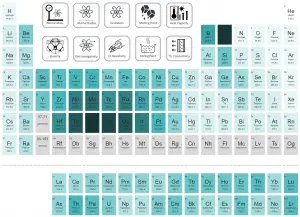circuit_girl
Member
- Location
- GA
- Occupation
- Circuit Design Engineer
Hi Guys,
I've been beating my head against a wall for 4 days, with cmils, meter Kelvins, Coulombs, and so forth. I've spent so much time on Google, I have a headache. I just feel numb :/ - I am trying to determine the maximum amount of current an AWG sized conductor can handle before it melts. I don't care about derating, or temperature coefficients, or all of that. I just want an ideal starting point and then I can work on derating and all the rest. I apologize that this is a bit all over the place, I'm frazzled
I know that NEC ampacity tables are very conservative. Essentially (for copper), they are 1A per 700cmil. From what I can guestimate, it looks like their rule-of-thumb is really about insulation, and anything the conductor is surrounded with or attached to- A #10AWG wire rated at 15A (20C) is possibly more likely able to handle 100A before it melts (ideally)... but how do I calculate what that actually is?
Unfortunately, NEC deals primarily with Copper and Aluminum... I need to be able to calculate this stuff for other metals, like Nichrome, and Tungsten, etc. - I want to do it mathematically, not rely on an Ohmeter or actually frying a wire with a current generator to empirically determine an answer. I know how to calculate Specific Resistance from AWG size if I know the Specific Resistivity (or 'K' value) of the conductor and it's material.... but I haven't figured out how the K value is calculated. I know the tables are based on 20C, but what if it's 25C, or 75C? How is K calculated?
I'm at a point where I think the only way I can figure it out is count electrons in a given material and work that back to Amps, but.... there has to be a smarter way.... :/
Can anyone help this poor girl out? To Sum:
o how to calculate ideal amps to melt a conductor of given AWG and material?
o how to calculate Specific Resistivity (aka 'K' value) of a given material at a given temp (20C, 50C, 75C)?
_Thank you for *any* help_
C
I've been beating my head against a wall for 4 days, with cmils, meter Kelvins, Coulombs, and so forth. I've spent so much time on Google, I have a headache. I just feel numb :/ - I am trying to determine the maximum amount of current an AWG sized conductor can handle before it melts. I don't care about derating, or temperature coefficients, or all of that. I just want an ideal starting point and then I can work on derating and all the rest. I apologize that this is a bit all over the place, I'm frazzled
I know that NEC ampacity tables are very conservative. Essentially (for copper), they are 1A per 700cmil. From what I can guestimate, it looks like their rule-of-thumb is really about insulation, and anything the conductor is surrounded with or attached to- A #10AWG wire rated at 15A (20C) is possibly more likely able to handle 100A before it melts (ideally)... but how do I calculate what that actually is?
Unfortunately, NEC deals primarily with Copper and Aluminum... I need to be able to calculate this stuff for other metals, like Nichrome, and Tungsten, etc. - I want to do it mathematically, not rely on an Ohmeter or actually frying a wire with a current generator to empirically determine an answer. I know how to calculate Specific Resistance from AWG size if I know the Specific Resistivity (or 'K' value) of the conductor and it's material.... but I haven't figured out how the K value is calculated. I know the tables are based on 20C, but what if it's 25C, or 75C? How is K calculated?
I'm at a point where I think the only way I can figure it out is count electrons in a given material and work that back to Amps, but.... there has to be a smarter way.... :/
Can anyone help this poor girl out? To Sum:
o how to calculate ideal amps to melt a conductor of given AWG and material?
o how to calculate Specific Resistivity (aka 'K' value) of a given material at a given temp (20C, 50C, 75C)?
_Thank you for *any* help_
C


